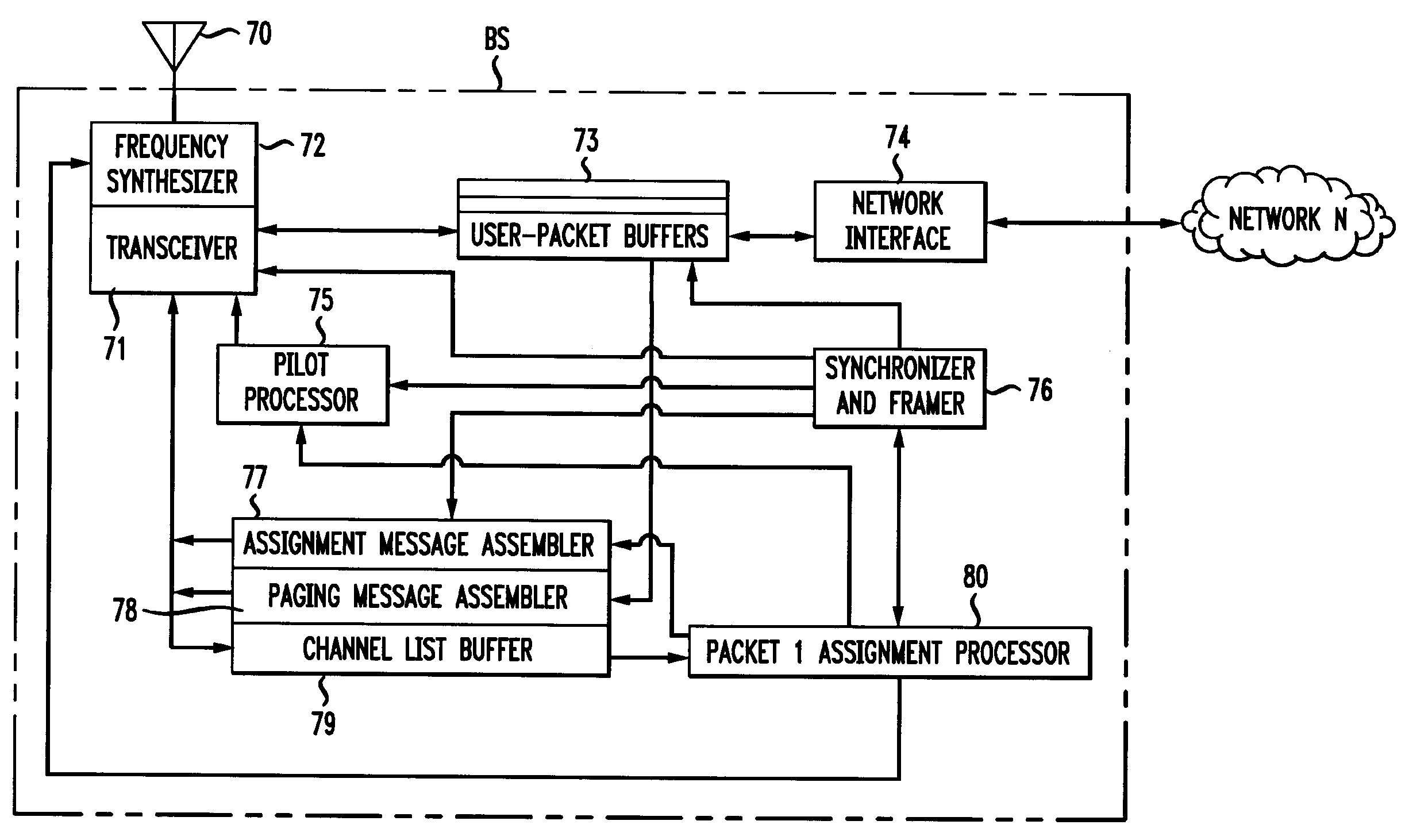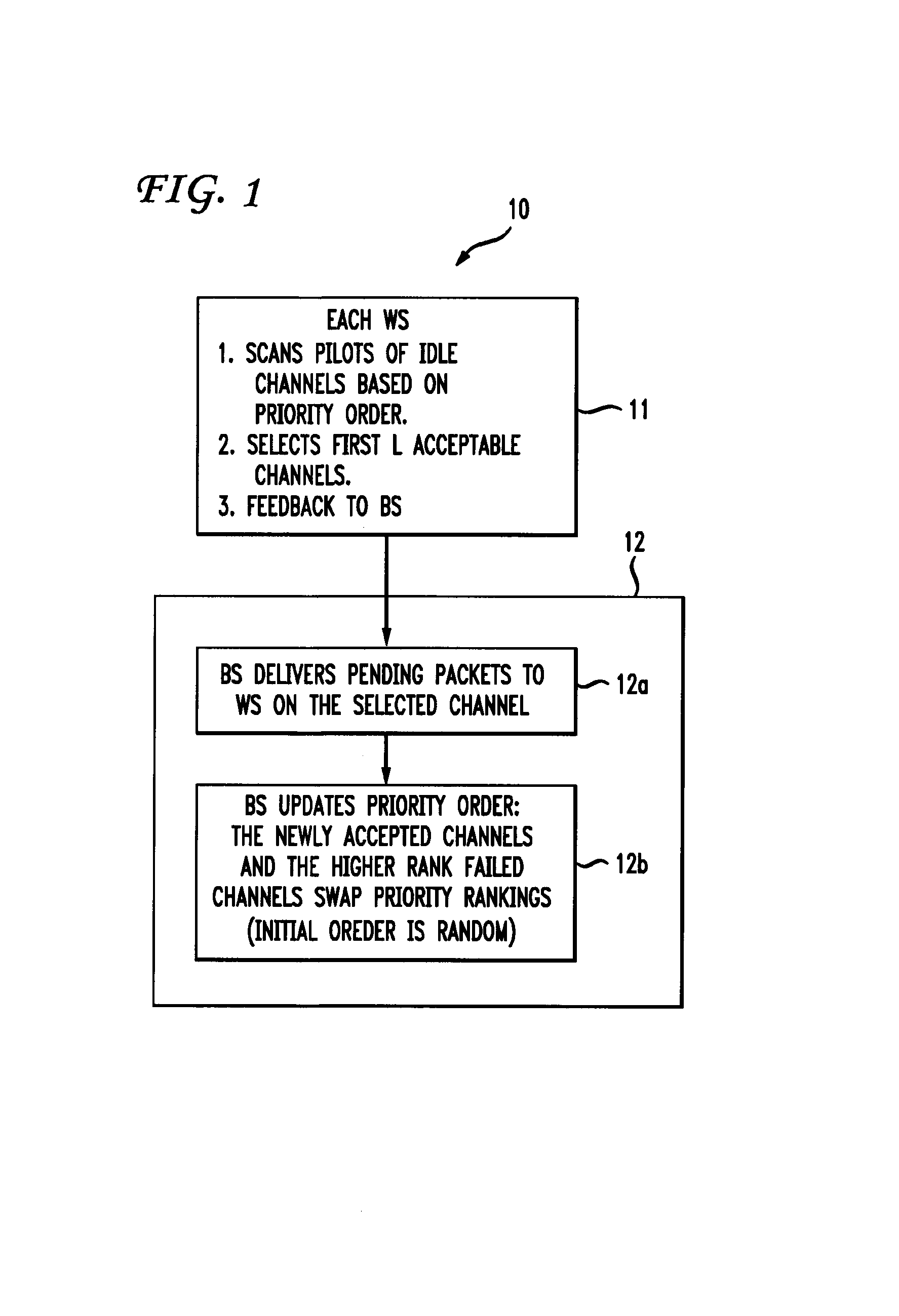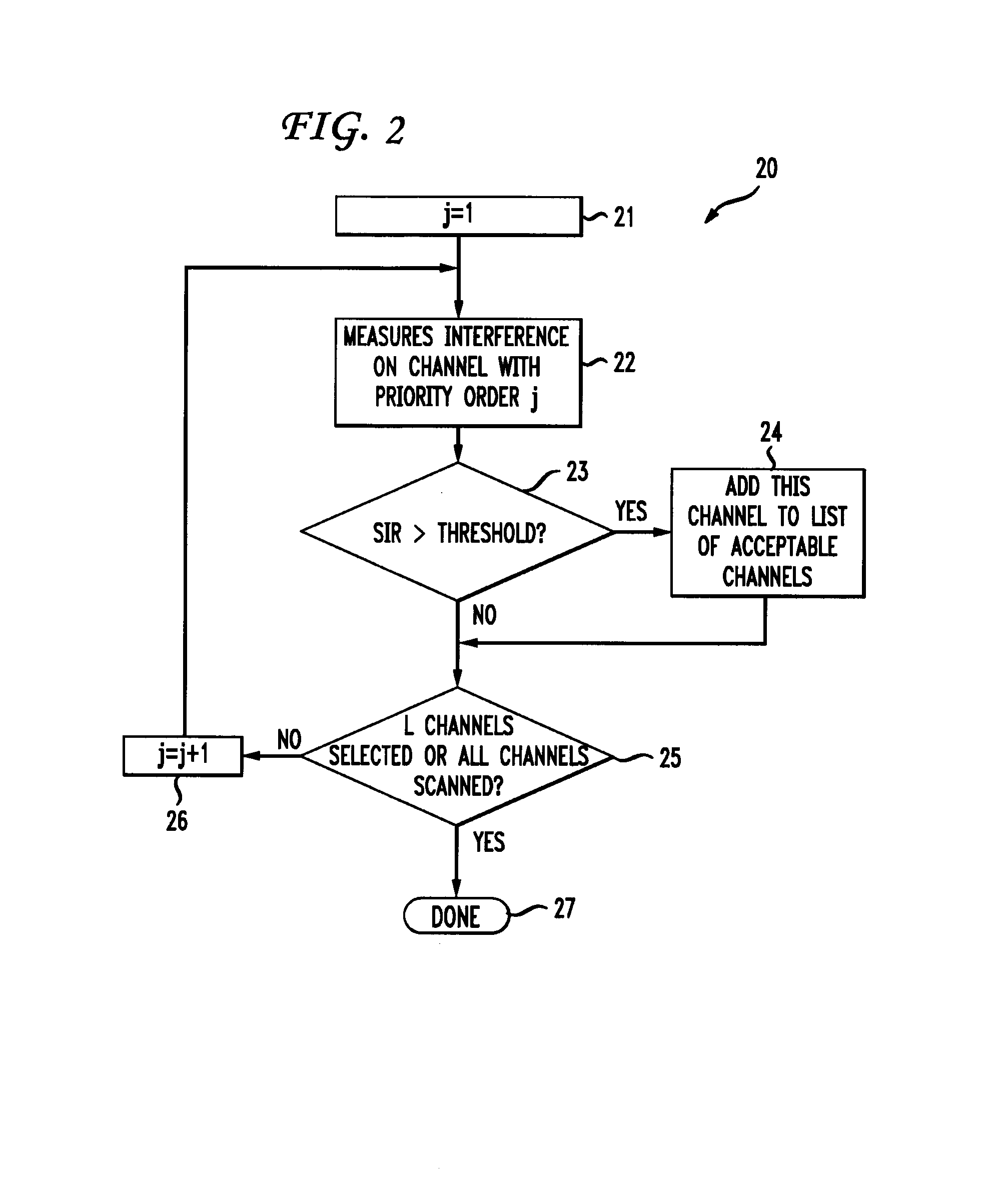System and method for selecting a transmission channel in a wireless communication system that includes an adaptive array
a wireless communication system and adaptive array technology, applied in the field of wireless telecommunications system and method, can solve the problems of inability of cellular networks to provide, the price of the advantages obtained by statistical multiplexing is rapidly changing interference environment, and the circuit-access channel assignment method based on continuous interference measurement and averaging may not achieve desirable effects, etc., to achieve the effect of suppressing interferen
- Summary
- Abstract
- Description
- Claims
- Application Information
AI Technical Summary
Benefits of technology
Problems solved by technology
Method used
Image
Examples
Embodiment Construction
[0045]For measurement-based Dynamic Channel Assignment (DCA) to be effective in packet access, it is important to (1) reduce measurement time and avoid undue setup latency, (2) make the assignment robust to setup latency, and (3) completely eliminate blindness to interference in the sensing process, if possible. The invention is successful in all three aspects. If (3) is not implemented, (1) and (2) together can still be very effective in reducing interference.
[0046]To achieve (1), we introduce a “pilot” scheme, which maps the interference on the candidate channels conveniently together onto a pre-determined set of time and frequency segments, enabling a rapid simultaneous interference measurement. The pilot scheme introduced herein provides a mechanism for mobile stations to obtain rapid interference measurements. The same pilot signals can also be transmitted by the mobile stations, which allow base stations that use adaptive arrays to monitor and avoid interference in the reverse...
PUM
 Login to View More
Login to View More Abstract
Description
Claims
Application Information
 Login to View More
Login to View More - R&D
- Intellectual Property
- Life Sciences
- Materials
- Tech Scout
- Unparalleled Data Quality
- Higher Quality Content
- 60% Fewer Hallucinations
Browse by: Latest US Patents, China's latest patents, Technical Efficacy Thesaurus, Application Domain, Technology Topic, Popular Technical Reports.
© 2025 PatSnap. All rights reserved.Legal|Privacy policy|Modern Slavery Act Transparency Statement|Sitemap|About US| Contact US: help@patsnap.com



